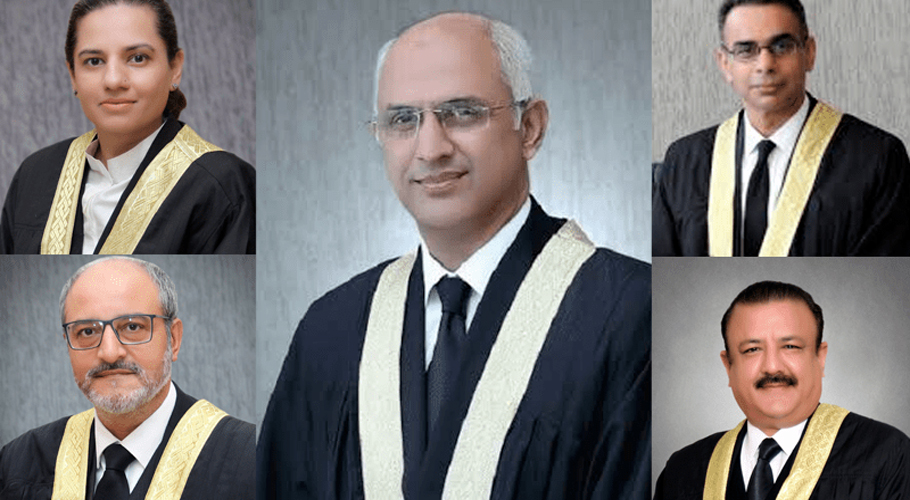Challenge to Chief Justice Islamabad High Court’s Actions – Five Judges Approach Supreme Court
The petitions stated that once a case has been assigned to a bench, the Chief Justice of the High Court has no authority to reconstitute benches or transfer cases.
Islamabad (Web News)
Five judges of the Islamabad High Court have approached the Supreme Court against the powers and actions of the Chief Justice of the Islamabad High Court. Justices Mohsin Akhtar Kayani, Babar Sattar, Tariq Mehmood Jahangiri, Saman Rafat, and Ejaz Ishaq Khan filed separate petitions in the Supreme Court.
In their petitions, the judges requested the Supreme Court to declare that administrative powers cannot be used to undermine or override the judicial powers of High Court judges. The petitions stated that once a case has been assigned to a bench, the Chief Justice of the High Court has no authority to reconstitute benches or transfer cases.
The petitions further argued that the Chief Justice cannot arbitrarily exclude available judges from the roster or use this power to remove judges from judicial responsibilities. They requested the Supreme Court to declare that the formation of benches, transfer of cases, and issuance of rosters can only be done under rules framed with the approval of all High Court judges, as provided under Articles 202 and 192(1) of the Constitution.
The petitioners also submitted that bench formation, roster-making, and case transfers cannot rest solely in the hands of the Chief Justice, and that the “Master of the Roster” principle has already been struck down in Supreme Court rulings.
They contended that the administrative committees formed through notifications issued on February 3 and July 15, and their subsequent actions, were mala fide, unlawful, and void. The judges requested the Court to declare all actions of these committees and notifications illegal. They further argued that the approval of the Islamabad High Court Practice and Procedure Rules 2025 through an illegally constituted administrative committee, and the issuance of notifications without prior approval of the High Court, violated Articles 192(1) and 202 of the Constitution. They added that the later ratification of these actions in September was also unlawful and ineffective.
The petitioners urged the Supreme Court to direct the Islamabad High Court to exercise effective supervision and oversight over the district judiciary, as required by Article 203 of the Constitution, so that every High Court maintains supervision and control over its subordinate courts.
They further requested the Supreme Court to declare that a High Court cannot issue a writ to itself under Article 199, which deals with the jurisdiction of High Courts. They emphasized that a Division Bench of the High Court has no power to hear appeals against interim orders of a Single Bench, nor can it exercise supervisory control over a Single Bench as if it were a subordinate court or tribunal.
The petitioners also argued that a High Court judge can only be restrained from judicial functions under Article 209 of the Constitution, and that filing a writ of quo warranto to remove a judge from office is not valid. Article 209 grants the Supreme Judicial Council the authority to investigate the capacity and conduct of judges of the Supreme Court and High Courts.
Concluding their statements, the petitioners requested the Supreme Court to grant any other relief deemed appropriate in light of the circumstances of the case.

